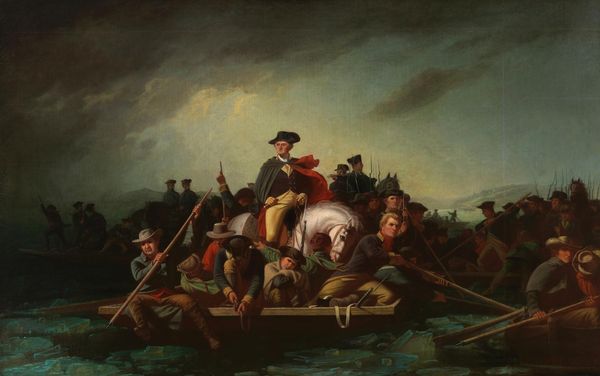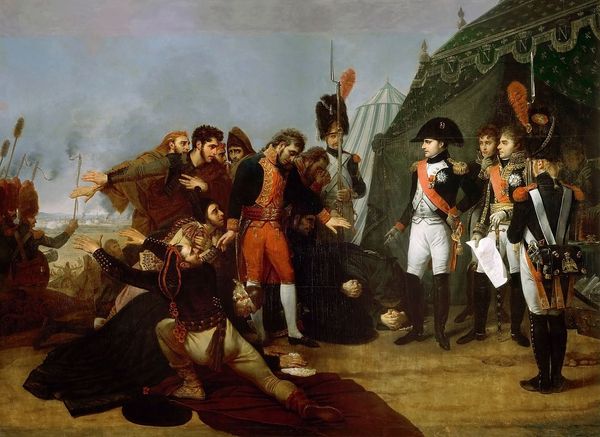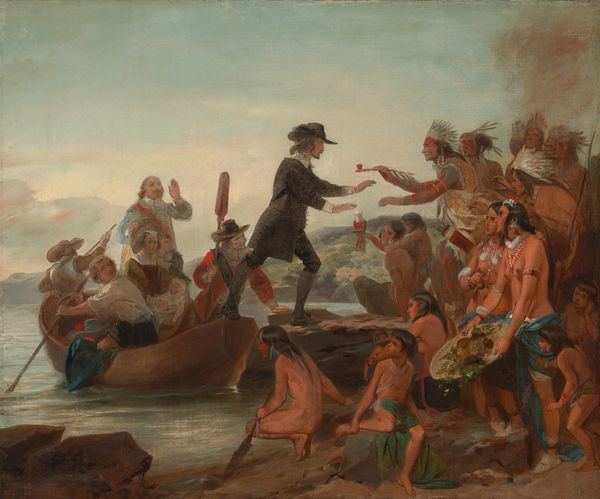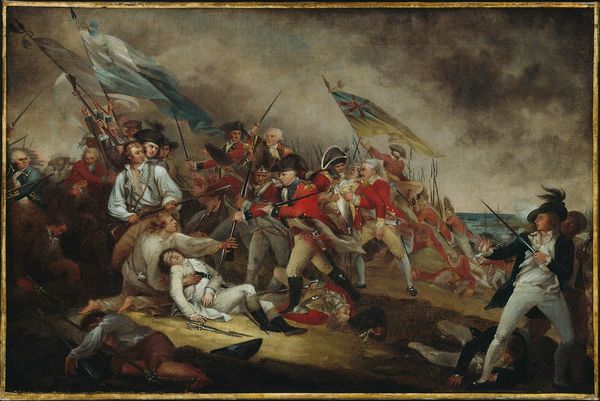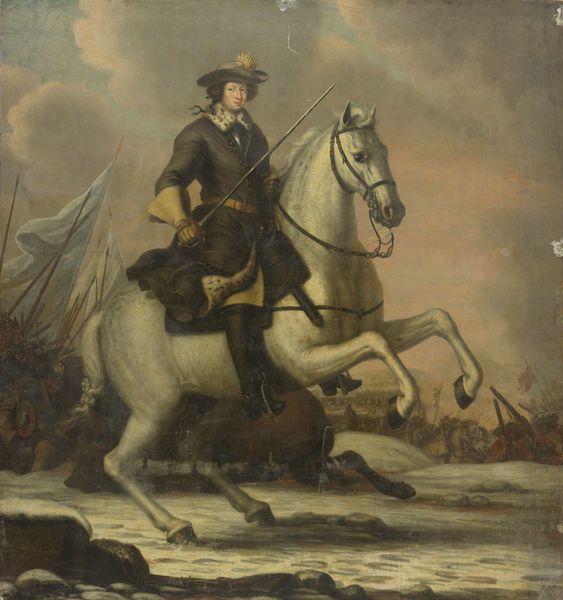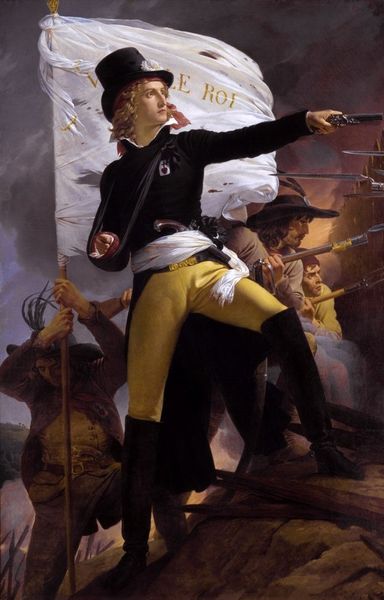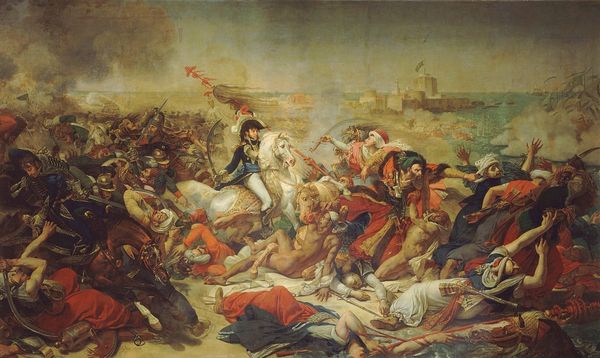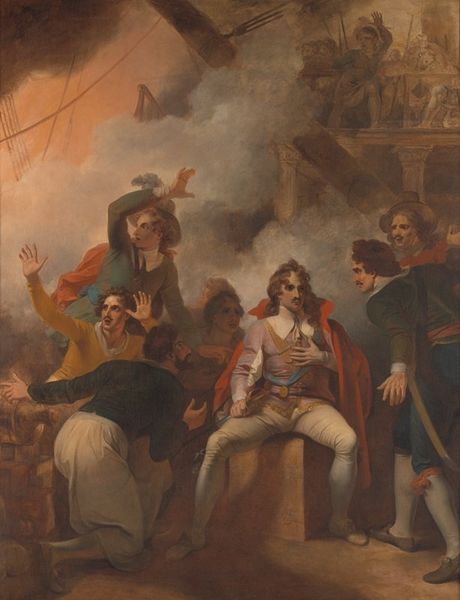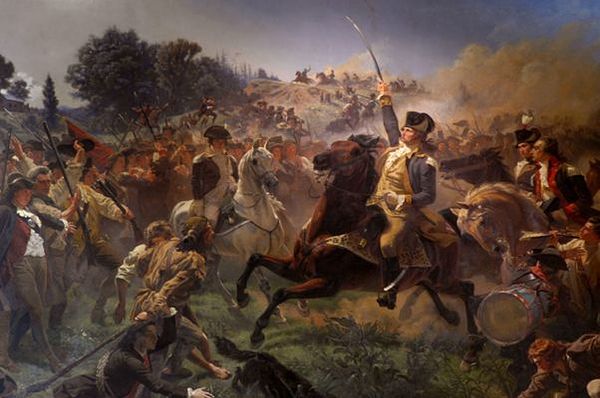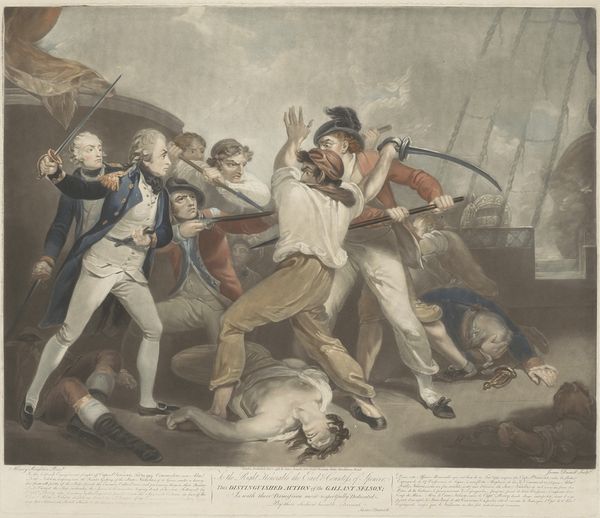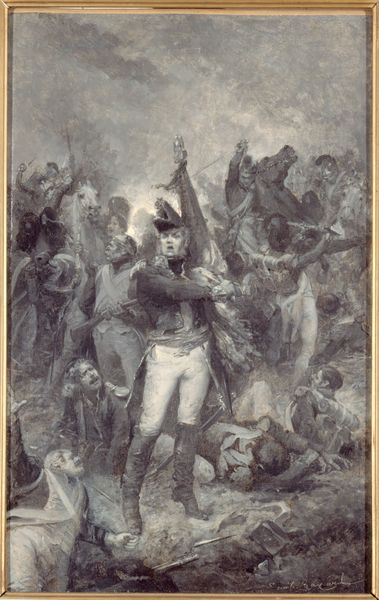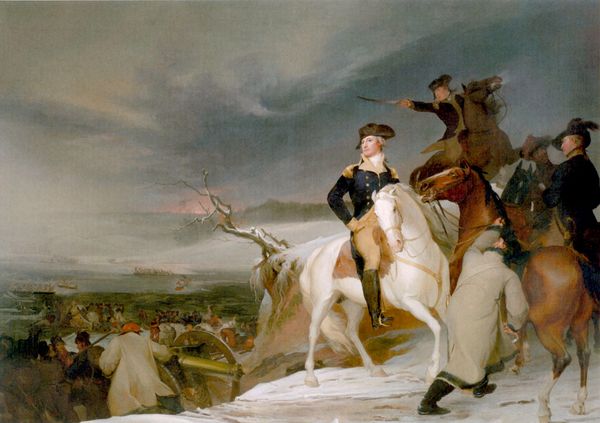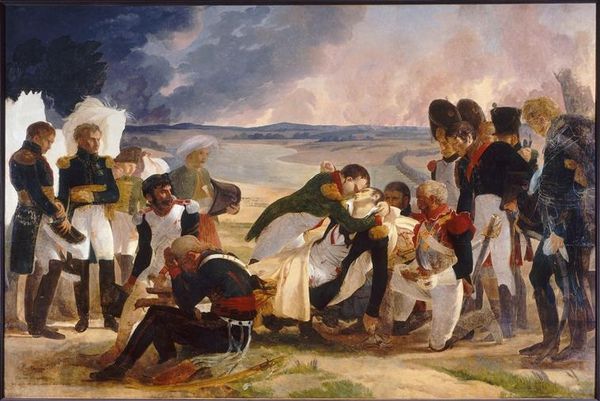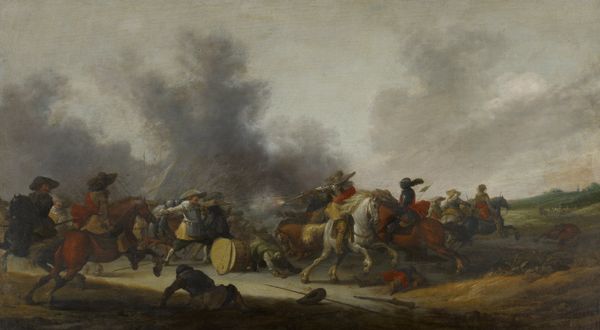
oil-paint
#
portrait
#
figurative
#
narrative-art
#
oil-paint
#
painted
#
figuration
#
oil painting
#
group-portraits
#
romanticism
#
history-painting
Copyright: Public Domain: Artvee
Editor: John Trumbull’s oil on canvas from circa 1797, titled “Lieutenant Thomas Grosvenor and Servant,” feels immediately like a scene plucked from a grand adventure— a slightly chaotic one, judging by the fallen figure at Grosvenor’s feet. What leaps out at you when you look at this work? Curator: Oh, adventure indeed! But, perhaps, a touch more complicated than just derring-do. I'm immediately drawn to the implied relationship, fraught as it might be, between Grosvenor and his…attendant. What is their connection in this tumultuous scenario? The servant almost seems to be both protecting and being protected. I wonder what it tells us, not just about these men, but about the era’s social dynamic. Notice how the servant is positioned slightly behind Grosvenor, armed, but his gaze seems to hold both alertness and a certain apprehension. Does Trumbull want us to see the implied tensions? Editor: That's fascinating; I hadn’t considered the subtleties in their dynamic. I was caught up in the sword and the battlefield. But thinking about it now, it's clear that the relationship goes deeper than mere master and servant. Curator: Absolutely. Think about the societal norms of the time and Trumbull, even if subtly, presents an ambiguous vision. There is, on the one hand, protection from the attendant. Yet Grosvenor clearly benefits and maintains position because of these dynamics. Is it possible that their intertwined fates on this “adventure” transcend those norms? Editor: It makes you consider all the stories layered beneath the surface of what seems, initially, just a historical portrait. I’ll certainly carry a different understanding of this artwork. Curator: Excellent! I think that’s the key; that initial glance can give you narrative, but digging for social tension adds complexity, transforming art from simple imagery to nuanced historical exploration!
Comments
No comments
Be the first to comment and join the conversation on the ultimate creative platform.
